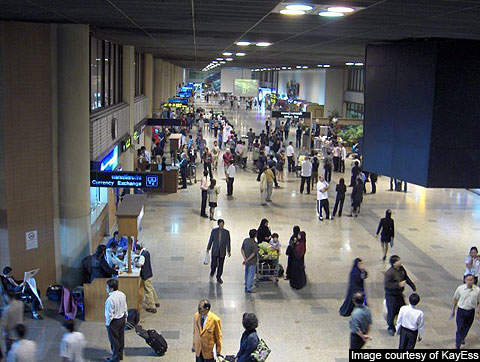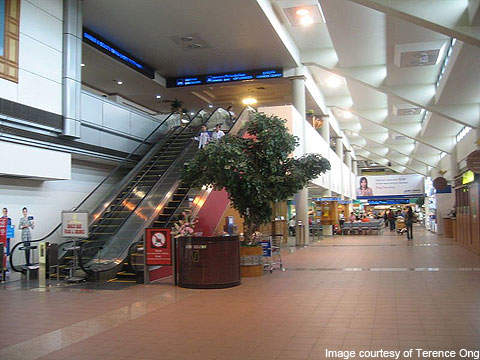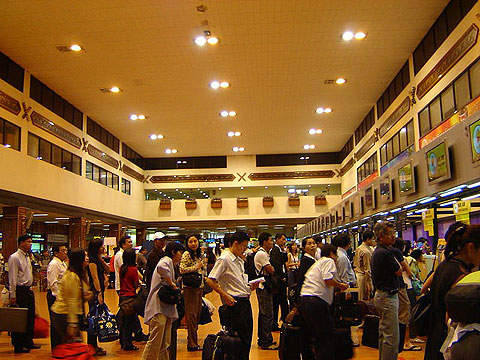Don Mueang International Airport, also known as Old Bangkok International Airport, was officially opened as a Royal Thai Air Force Base in March 1914. The airport is located 24km north of Bangkok. Commercial flights began operating from the airport in 1924.
Don Mueang was closed commercially in September 2006, as the new Suvarnabhumi Airport opened in Bangkok, but it continued to be used for charter flights and also as an aircraft maintenance centre.
The airport was reopened in March 2007 to ease passenger traffic and allow repairs to be made to the cracked runways at Suvarnabhumi Airport and also to carry on the second-stage expansion of Suvarnabhumi Airport. After the renovation of the taxiway, Don Mueang is now used for serving 140 domestic flights carrying 20,000 passengers each day.
Before the closure, Don Mueang was the 18th-busiest airport in the world and second busiest in Asia by passenger volume. At its peak, in 2005, Don Mueang accommodated 80 airlines, operating 160,000 flights serving the whole continent and handling 38,000,000 passengers and 700,000t of cargo.
The reopened airport is now being used by Thai Airways for non-connecting domestic flights and two low-cost carriers Nok Airways and One-Two-Go Airlines. International carriers have refused to move to Don Mueang and continue to operate at Suvarnabhumi Airport.
Don Mueang is jointly owned by the Thai Government and Don Mueang Royal Thai Air Force (RTAF). It houses the Don Muang RTAF Base and also the RTAF 1st Air Division.
Don Mueang terminal features
Don Mueang International Airport has three terminals. Terminals 1 and 2 are international terminals with 124 and 196 check-in counters respectively. International Terminal 1 is in use for government and charter planes, while International Terminal 2 is inactive. There are plans to using Terminal 2 as a low-cost carrier (LCC ) terminal in future. Terminal 3 is in use for domestic flight passengers and has 43 check-in counters.
Terminal 1 covers an area of 109,033m2 and has the capacity to handle 16 million passengers a year. The arrival area measures 28,469.39m2, the departure area 27,262.90m2 and the transit area 1,802.50m2.
The domestic terminal spreads over 22,226m2 and can accommodate 4,500 passengers an hour. The arrival and departure areas are 5,623m2 and 8,433m2 respectively. The other public and rental area in this terminal measures 7,058m.
Runways
There are two runways – 21 R/03L and 21 L/03R – with a golf course between them owned by RTAF. Golfers are warned by a red light whenever a plane lands.
Runway 21 R/03L is 3,700m long and 60m wide. Runway 21 L/03R is 3,500m long and 45m wide. Runways are made of asphalt concrete and can operate 60 flights an hour.
Taxiway and aircraft parking
Don Mueang has 23 taxiways and 95 aircraft parking stands. There are 25 parking stands with contact gates at the international passenger terminal and eight parking stands with contact gates at the domestic passenger terminal. The remaining 62 are remote parking bays.
Road and rail infrastructure
Don Mueang International Airport is connected to downtown Bangkok via Vibhavadi Rangsit Highway. The Uttaraphimuk tollway and an expressway allow passengers to reach the centre of the city. Many bus services operate between Suvarnabhumi and Don Mueang Airports.
A walkway bridge from the airport connects to the train station on the opposite side of the highway. A rail service connects to Hua Lamphong station to the centre of the city. The trains run every 30 minutes from the airport station on weekdays.
Don Mueang history
Before its 2006 closure, the airport was spelled "Don Muang" and carried the IATA airport code BKK. After the opening of Suvarnabhumi Airport, the spelling was changed to "Don Mueang". The airport now carries the new IATA code DMK and continues to retain its old ICAO (International Civil Aviation Code) airport code VTBD.
Don Muang Airport acted as a battlefield between royalists and the government forces during the Siamese Revolution in 1932. It was used by the Japanese Army during World War II. The airport was also a major command and logistics hub for the US Air Force during the Vietnam War.
The airport has witnessed a few major disasters including the hijack of Garuda Indonesia flight to Colombo in 1981.







